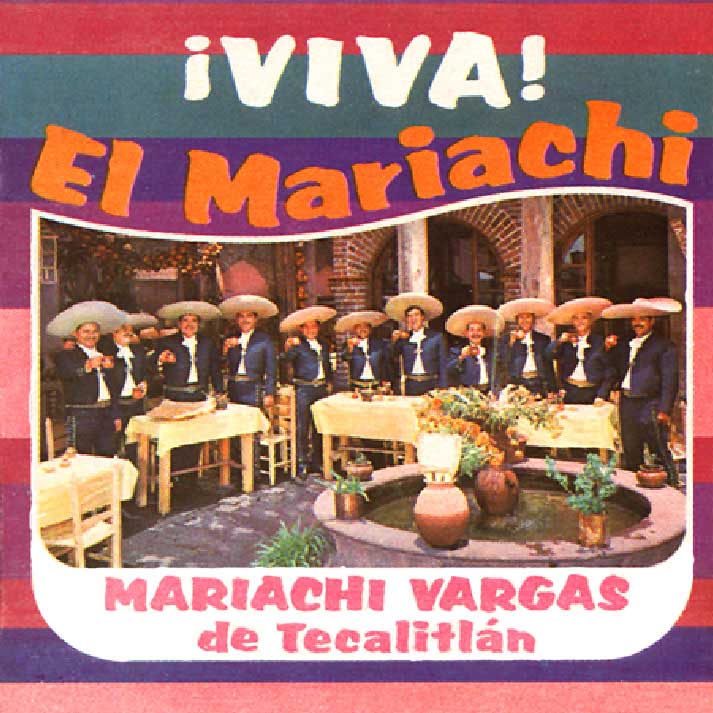Mariachi
music was not invented or discovered on some date in history
but rather is a result of various cultural forces in Mexico
over time. Although mariachi music is not especially well documented,
the factors that contributed to the development of this genre
of music are very definite.
The
word "mariachi" was in use by the Coca at the time
of the Spanish conquest of 1529. The Indians had a five-tone
system for music but were soon taught the twelve-tone system
by the Spanish friars. Music was used to convert the Indians
to Catholicism, and they actually established a music college
in the 1500's. Also of great importance was the introduction
of European instruments such as the harp, violin and guitar.
During
the 1600's, the people of the region of Coccula combined the
new instruments of the Spanish conquerors with the prehistoric
ones such as the chirimias and wooden drums of the day. This
mixing of the two cultures continued almost unchanged during
this century. The most important element of this time was the
use of music in the lives of the people. Music played a major
part in people's religious rituals and celebrations.
During
the colonial period of the late 1700's the sone form began to
appear. In the original form, sones were actually strings of
jarabe and were mostly satirical in nature; often of church
and state. Sones became popular in the tonadillas esenicas of
the day where much of the country's folk music was created.
The latter half of the century saw a coming together of the
Spanish, Indian and Negro influences to create a national music
idiom. The music became a unifying symbol in the fight for independence
from 1810 till 1821. The common instruments of this time usually
included a harp, one or two violins, a guitar or variant, drums
and flutes.
It
is known that around 1840, a group led by Placido Rebolledo
existed in Tecalitlán that consisted of a harp, two violins
and a guitarra de golpe. This is one of the earliest-known references
to an organized group. In 1850, Amado Vargas had an ensemble
consisting of the same instruments. This was the beginning of
the modern mariachi group. Vargas's son, Gaspar, and grandson,
Silvestre, would shape the mariachi in the years to come.
The
cuarteto of the late 1800's, began to develop into a more sophisticated
sound. Until now, the mariachis had been a regional novelty
in the Jalisco area, but traveled to Mexico City to seek their
fortune. In the early 1900's, the mariachis became well received
in the capital, and with the invention of radio in the 1920's,
a national sensation was born. The trumpet was added about this
time, and the guitarron replaced the harp. The vihuela and more
violins were also added, which doubled the size of the mariachi
groups.
 In
the 1940's and 50's, motion pictures and sound recording created
a public interest like never before. Mariachi Vargas de Tecalitlán
appeared in over 200 motion pictures, and with Ruben Fuentes
as musical director, they began to record standard arrangements
of music. The rustic music of the hills became more sophisticated
and urbanized. Most groups now began to use two trumpets and
more violins, so the mariachi groups became small strolling
orchestras capable of interpreting all styles of music. In the
1960's, the music was popular internationally. in the late 1980's,
Linda Ronstadt launched a new interest in mariachi music with
her "Canciones de Mi Padre" album and tour. Young
people in the United States have been drawn into this genre
of music in record numbers. Educational institutions have made
the study of mariachi music a part of regular curricula. The
music itself continues to stay traditional and become more contemporary
at the same time.
In
the 1940's and 50's, motion pictures and sound recording created
a public interest like never before. Mariachi Vargas de Tecalitlán
appeared in over 200 motion pictures, and with Ruben Fuentes
as musical director, they began to record standard arrangements
of music. The rustic music of the hills became more sophisticated
and urbanized. Most groups now began to use two trumpets and
more violins, so the mariachi groups became small strolling
orchestras capable of interpreting all styles of music. In the
1960's, the music was popular internationally. in the late 1980's,
Linda Ronstadt launched a new interest in mariachi music with
her "Canciones de Mi Padre" album and tour. Young
people in the United States have been drawn into this genre
of music in record numbers. Educational institutions have made
the study of mariachi music a part of regular curricula. The
music itself continues to stay traditional and become more contemporary
at the same time.